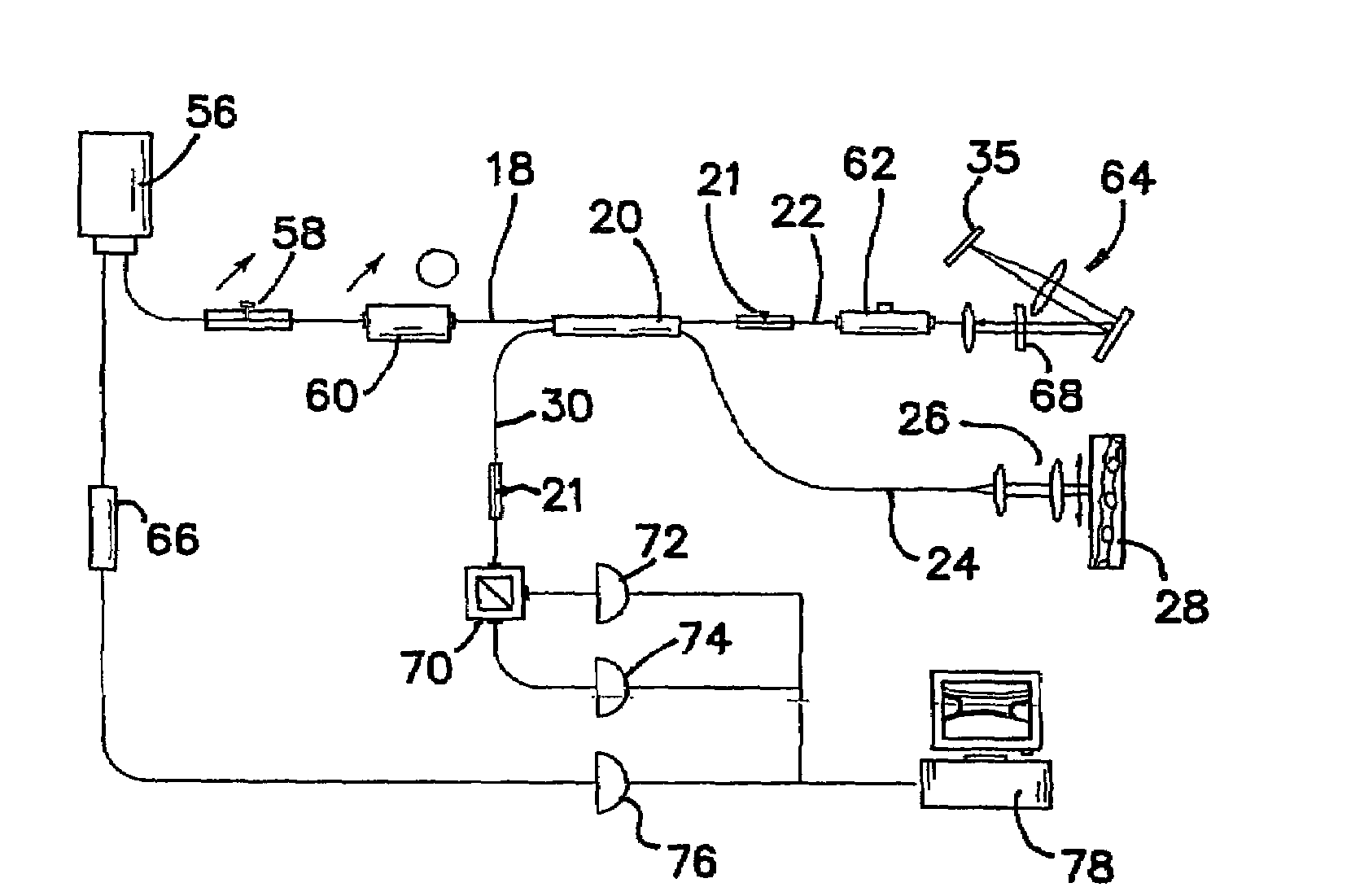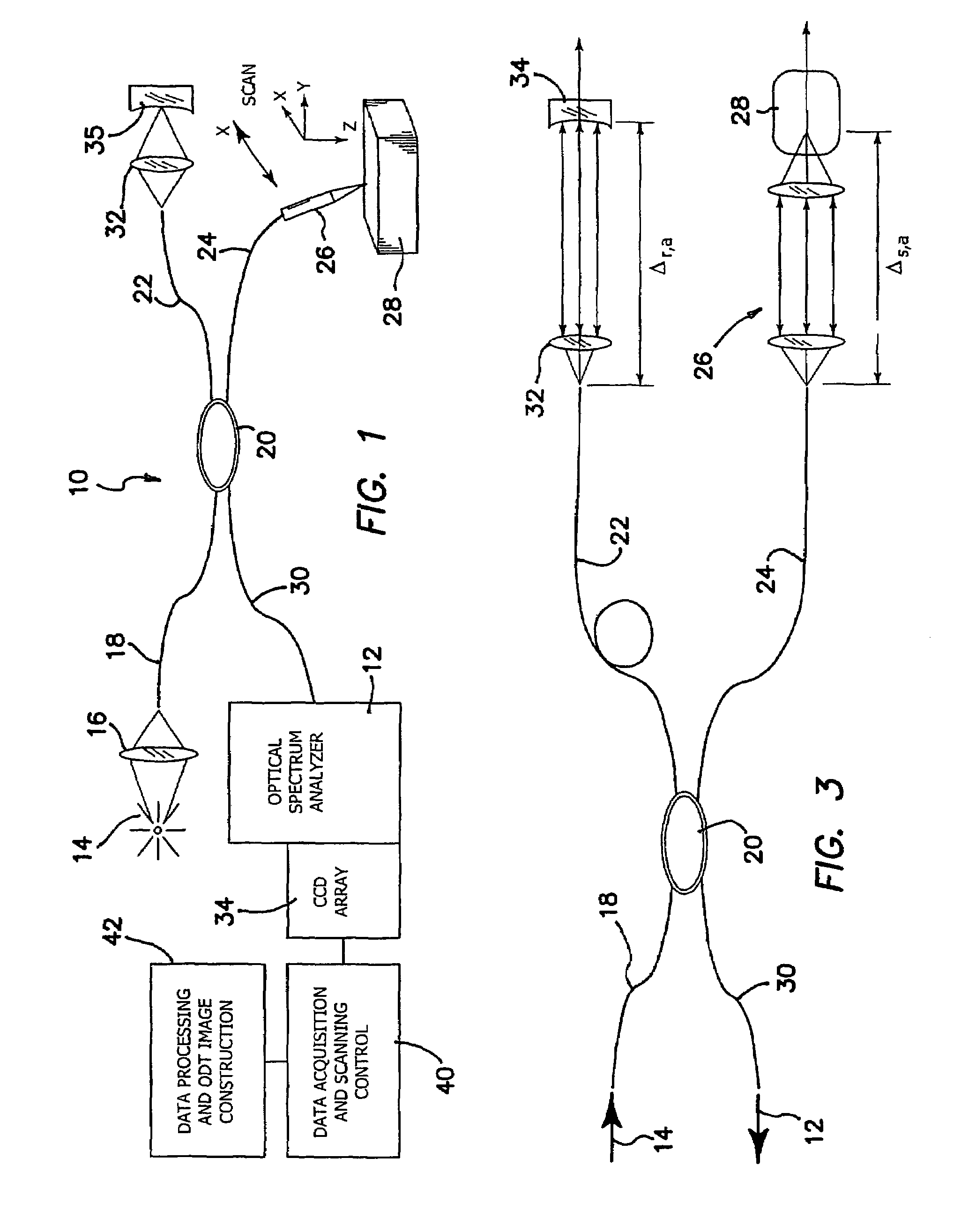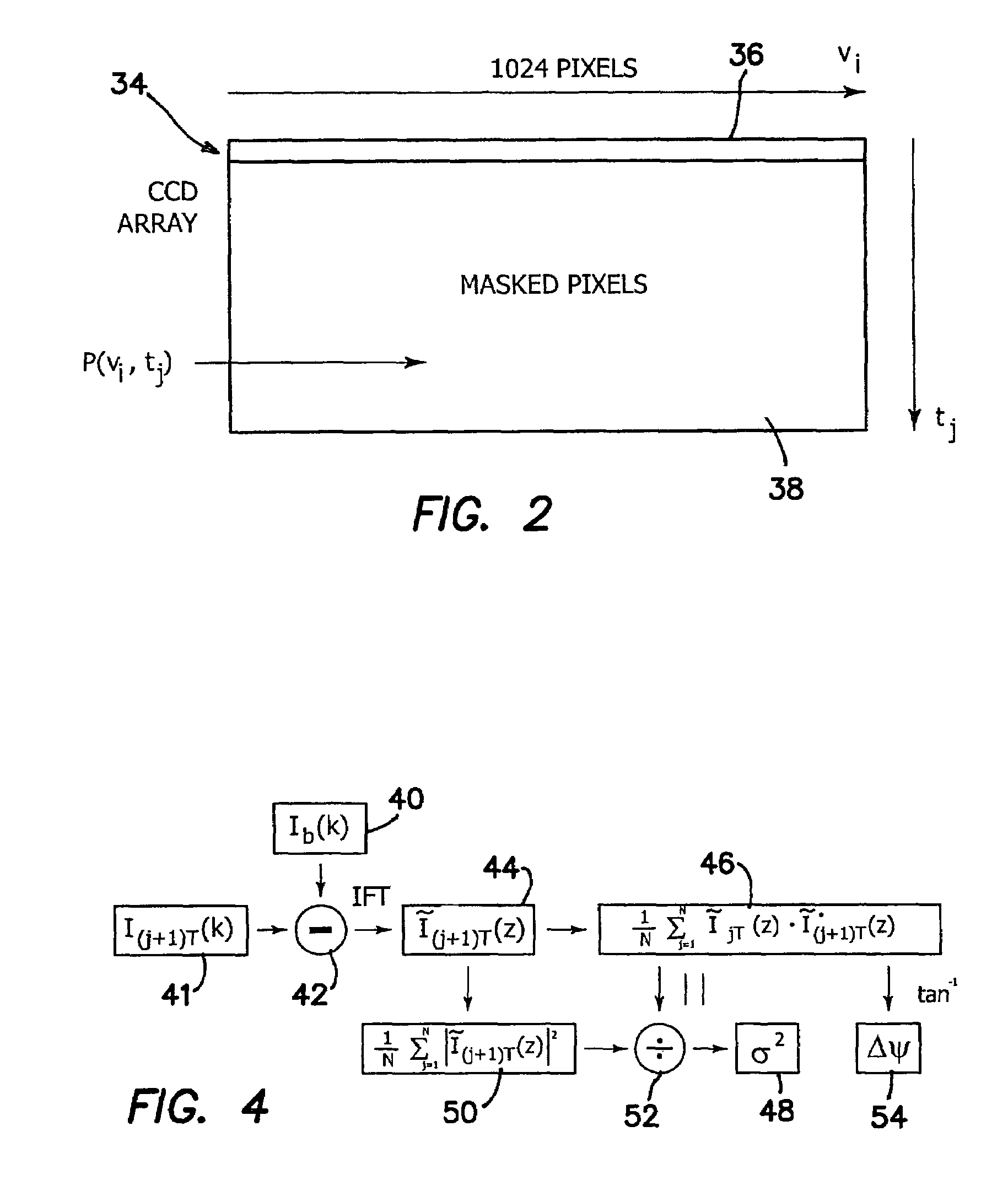High speed spectral domain functional optical coherence tomography and optical doppler tomography for in vivo blood flow dynamics and tissue structure
a functional optical coherence and tissue structure technology, applied in the field of biomedical imaging, can solve the problems of limiting the spatial resolution to approximately 200 m, limiting the spatial resolution of flow measurements by ldf, and high spatial resolution noninvasive techniques for imaging in vivo blood flow dynamics and tissue structure are currently not available as diagnostic tools, so as to improve the system sensitivity, eliminate low frequency noise, and double the imaging range
- Summary
- Abstract
- Description
- Claims
- Application Information
AI Technical Summary
Benefits of technology
Problems solved by technology
Method used
Image
Examples
Embodiment Construction
[0034]Although high resolution ODT structural and velocity images of static and moving constituents in turbid samples have been obtained using a time domain instrument, clinical application of the technique requires higher imaging speed. The invention is directed to a high speed FDOCT system for imaging in vivo blood flow. This is achieved and demonstrated according to the approach of the invention by using an FDOCT system based on spectral interferometry, an imaging construction algorithm, Monte Carlo simulation of multiple scattering and coherence gating to gain insight into and provide a model for the FDOCT imaging process.
[0035]The prior temporal domain ODT instrument acquires data for each pixel serially by a sequential two-dimensional scan, which limits imaging speed. Image acquisition time for our prototype device is given by T=NxNzΔtp, where Nx and Nz are the number of pixels in the lateral and depth dimensions, and Δtp is the pixel acquisition time. Inasmuch as detection of...
PUM
 Login to View More
Login to View More Abstract
Description
Claims
Application Information
 Login to View More
Login to View More - R&D
- Intellectual Property
- Life Sciences
- Materials
- Tech Scout
- Unparalleled Data Quality
- Higher Quality Content
- 60% Fewer Hallucinations
Browse by: Latest US Patents, China's latest patents, Technical Efficacy Thesaurus, Application Domain, Technology Topic, Popular Technical Reports.
© 2025 PatSnap. All rights reserved.Legal|Privacy policy|Modern Slavery Act Transparency Statement|Sitemap|About US| Contact US: help@patsnap.com



